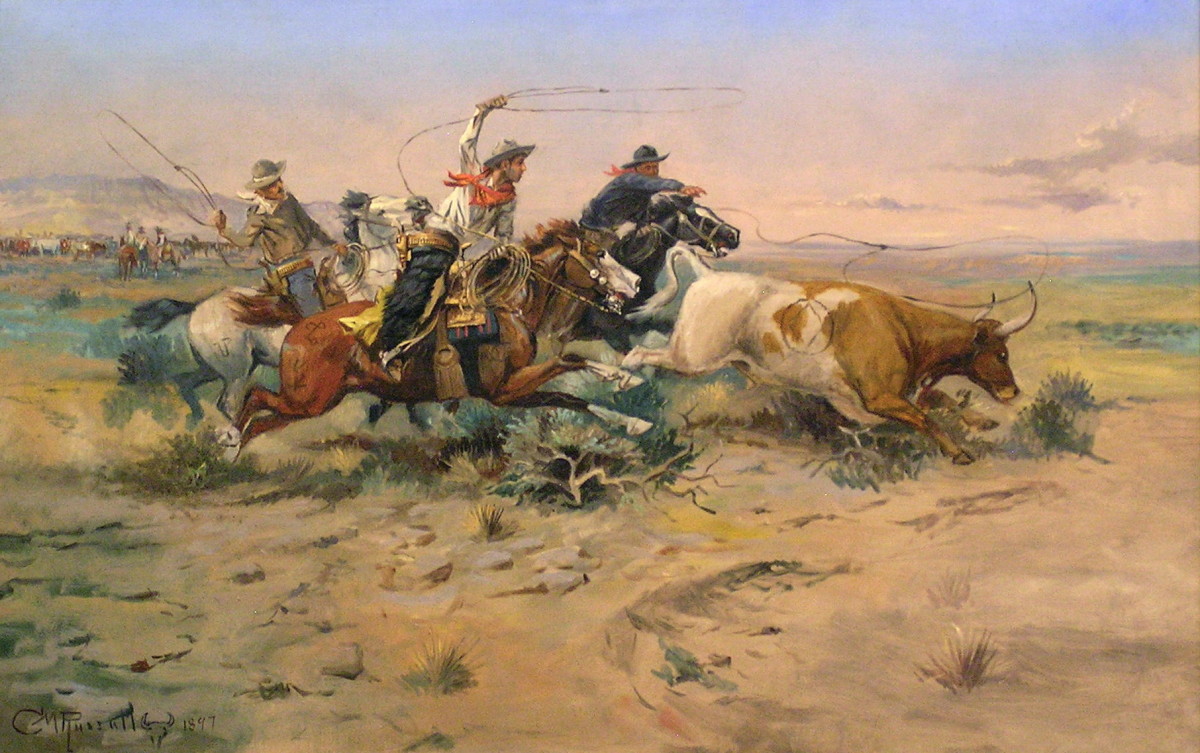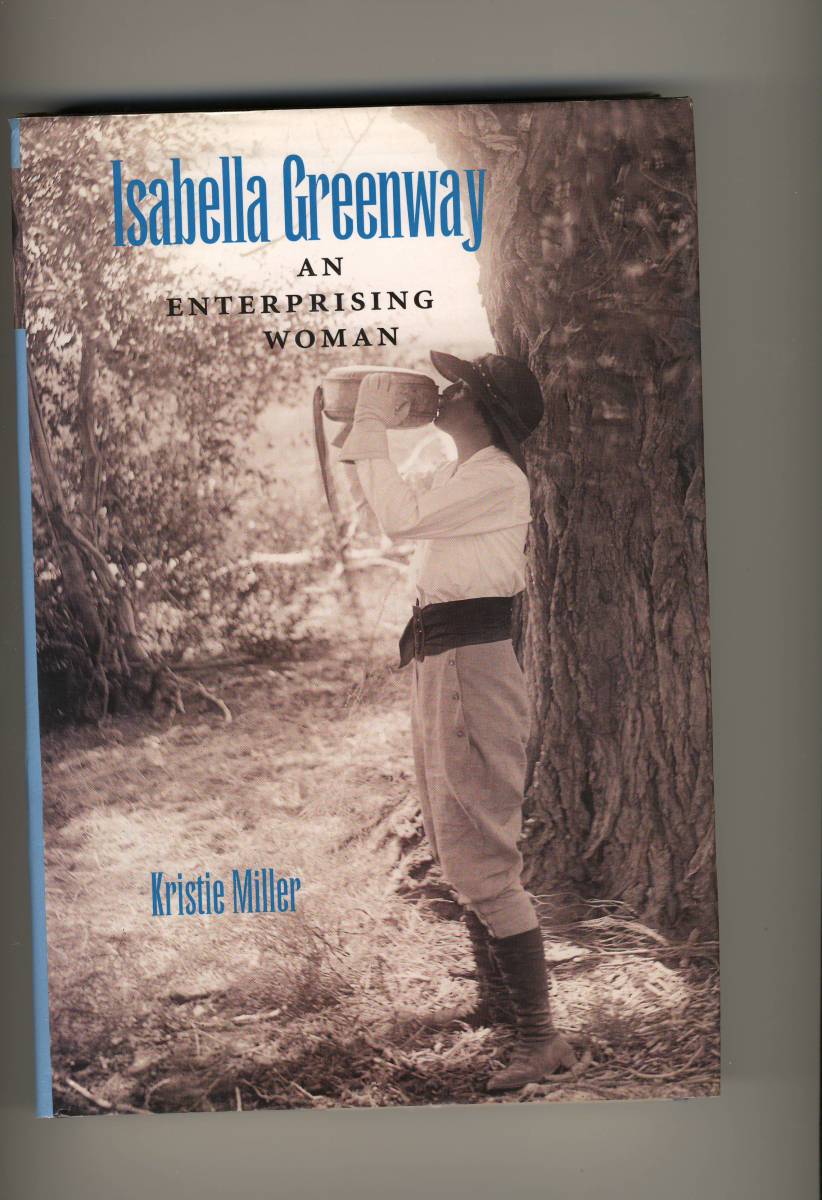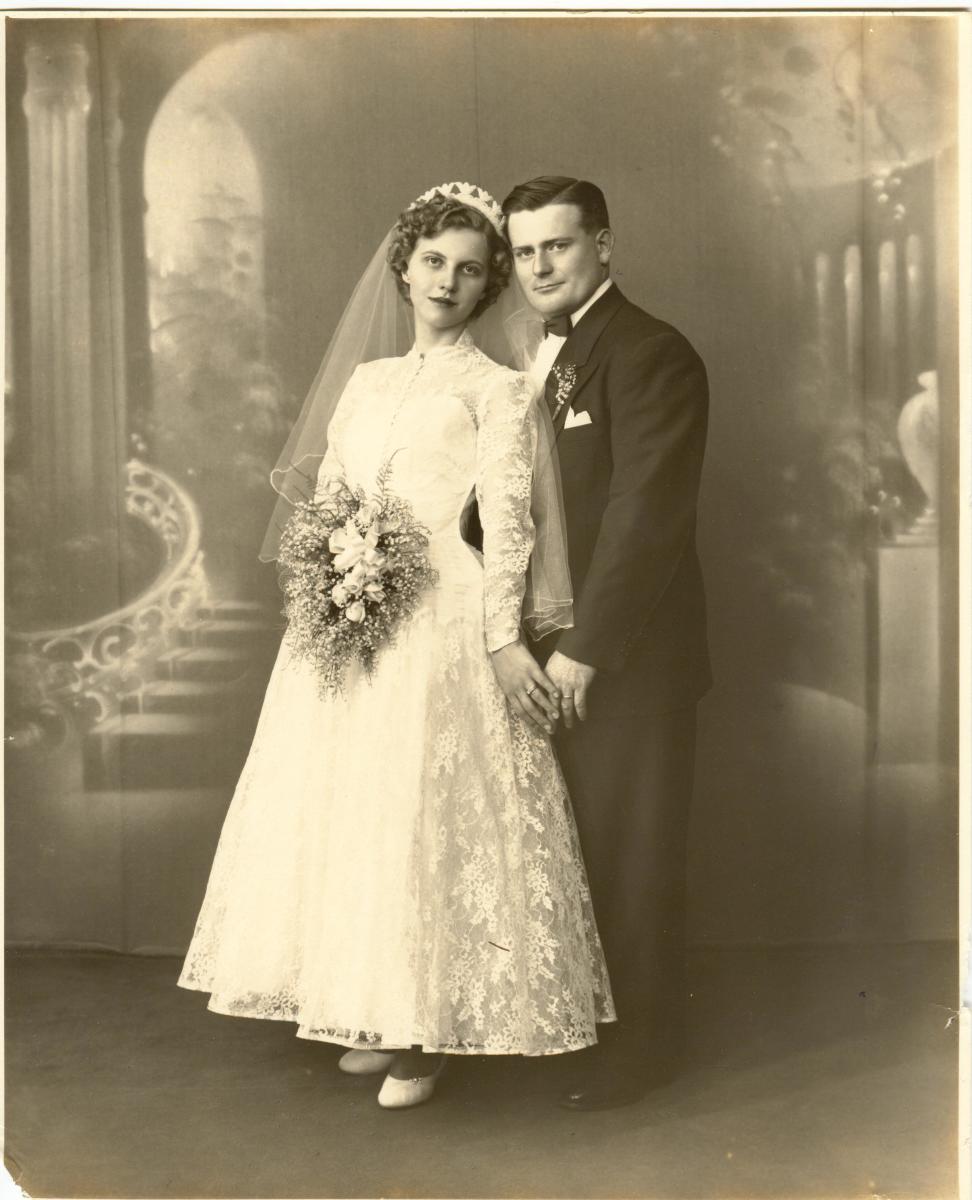Tucson's Fiesta de los Vaqueros Parade and Rodeo
Celebrating the Old West
Every year toward the end of February, the cowboy culture of the old west reasserts itself with a vengeance in Tucson. The Old Pueblo, as the locals fondly refer to Tucson, is proud of its past and takes advantage of every opportunity to celebrate its heritage and the Fiesta de los Vaqueros is one of these opportunities.
While the rodeo is a part of the cowboy culture of the American West, its roots go back to the early Spanish settlers in the New World. The Spanish introduced both horses and cattle to the New World and, as Spanish missionaries fanned out over what is now northern Mexico and southwestern United States to establish missions on the frontier, they brought with them cattle and established cattle raising as part of the agricultural activities of the missions.
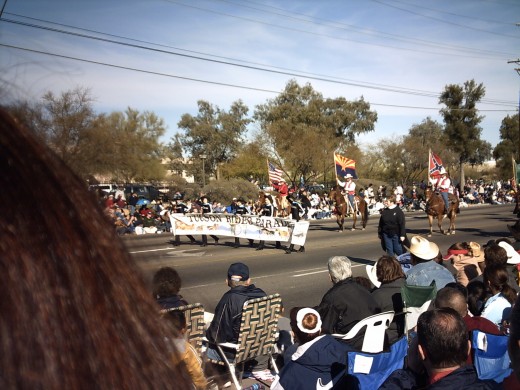
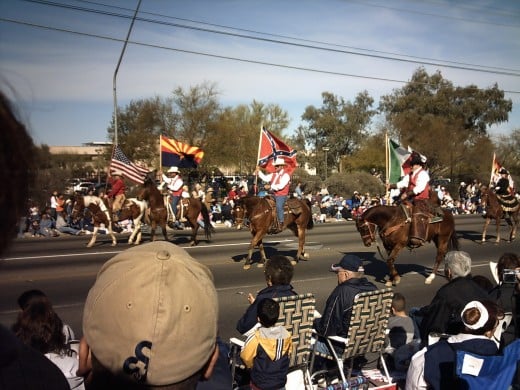
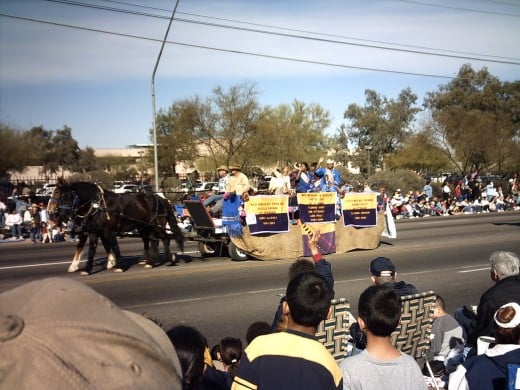
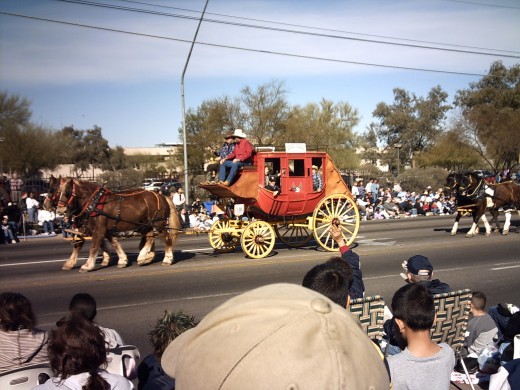
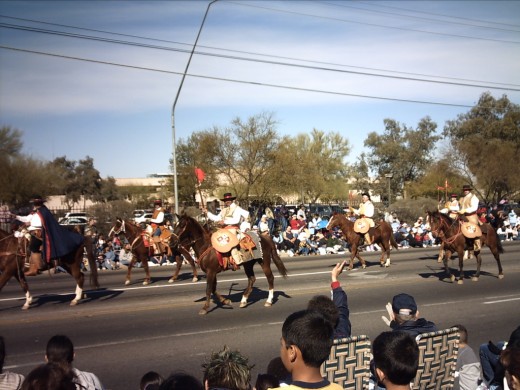
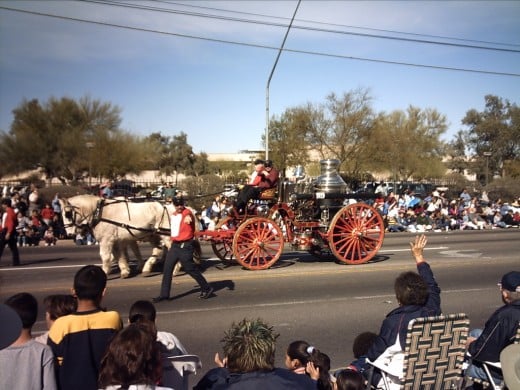
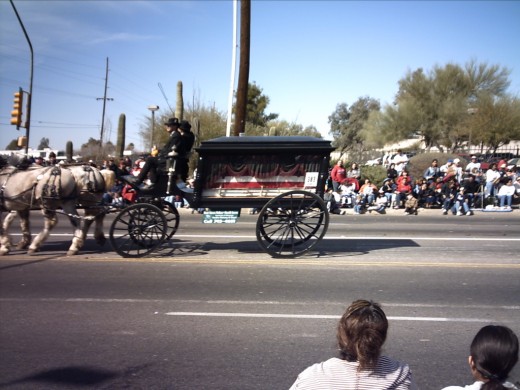
The Roots of the Rodeo Tradition go Back to Spanish Colonial Times
The word rodeo comes from the Spanish word rodear which means to surround and surround is exactly what cowboys have always done when it comes time to round up the cattle for branding or slaughter. In addition to cattle and horses, the Spanish also brought their traditions of horsemanship, roping and bull fighting to the New World.
In New Spain (what is now Mexico and southwestern United States) the men who tended cows at the missions and, later, on ranches, were known as vaqueros (from the Spanish word vaca or cow). When vaqueros got together in their free time they would often show off their skills in contests with roping cows, breaking horses, bull riding, etc.
With the acquisition of Texas and, following the end of the Mexican War, California, Arizona and New Mexico, the rodeo tradition was introduced to Americans. As the West became more settled, cowboys continued to get together to show off their skills. In time, they began doing it in town with townspeople joining the audience. Soon, entrepreneurs like William “Buffalo Bill” Cody and others began organizing wild west shows to entertain audiences in the eastern part of the country and, eventually, Europe, and rodeo events were included in these shows. When rising logistical costs put an end to these grandiose traveling shows, the rodeo portion survived and became a recognized sporting event.
Tucson's annual Fiesta de los Vaqueros parade heralds the start of Tucson's week long rodeo which is the first rodeo of the North American rodeo season each year.
In addition to being the start of the first rodeo of the season, the Fiesta de los Vaqueros parade is also the longest non-mechanized parade in the nation. There are no motorized vehicles (unless you count the Sanitation Department vehicles which bring up the end of the parade as they clean up the emissions left behind by the oat powered horses) in this parade as all of the marchers and floats either march or are transported by horses or mules.
The Fiesta de los Vaqueros parade has been held annually since 1925 and is the work of an all volunteer committee which plans and coordinates the participating organizations and individuals who march or ride in the parade.
Frederick Leighton Kramer is credited with both having the idea for the parade and rodeo as well as organizing the first parade and rodeo in 1925. Kramer was an avid horseman and president of the Arizona Polo Association. The few published references to him on the Internet all describe him as one who wintered in Tucson implying that he was one of the winter visitors that Tucson is noted for having. However, in addition to being the President of the Arizona Polo Association, he also owned a 160 acre tract of land in what is now a somewhat exclusive residential area in central Tucson, known as Catalina Vista. When Kramer purchased that land in the early part of the 20th century it contained a single large home with the city's only private swimming pool. He paid $25,000 for the home and acreage and, as part of the deal, got the broker, Roy Long, to agree to live in the home for the next year while Kramer and his wife toured Europe. Also, the rodeo that accompanied the 1925 parade was held at a place known as Kramer Field. I suspect that Kramer was either a wealthy investor who choose to spend much of the year living in Tucson or a California businessman with business interests in Tucson.
Regardless of who he was, Kramer felt that a mid-winter parade and rodeo would be a boon for the local tourist industry and, thanks to Kramer's foresight, it has been a big tourist draw from 1925 to the present. In fact, in the years immediately following 1925 the city often did not have enough hotel rooms to accommodate all of the visitors it drew.
The first parade in 1925 consisted of numerous mounted cowboys and cowgirls from local ranches, mounted Indians from local reservations, two military bands from nearby Ft. Huachucha, mounted polo players, mounted police and a riding group from the University of Arizona. Local schools and the University of Arizona declared a holiday for their students on the day of the parade (a practice that is still followed today by K-12 schools and Pima Community College but not the University of Arizona).
Prize money for that first rodeo in 1925 was $6,650 (it is over $20,000 today). Finally, in addition to fun loving tourists, the 1925 parade, which took place while Prohibition was still in force and the sale and consumption of alcoholic beverages was illegal, also attracted U.S. Treasury agents who, along with local police, raided 15 stills, confiscated 200 gallons of alcohol and arrested 40 people for violating the Volstead Act.
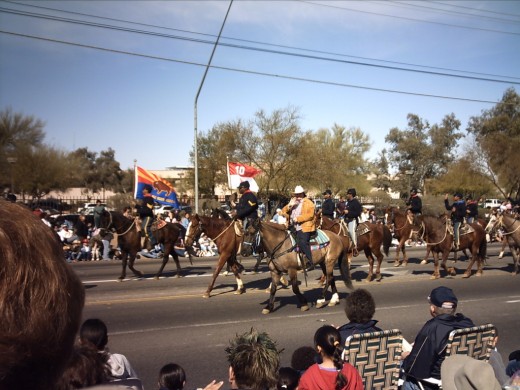
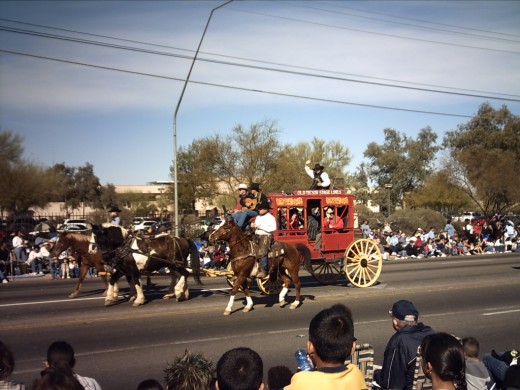
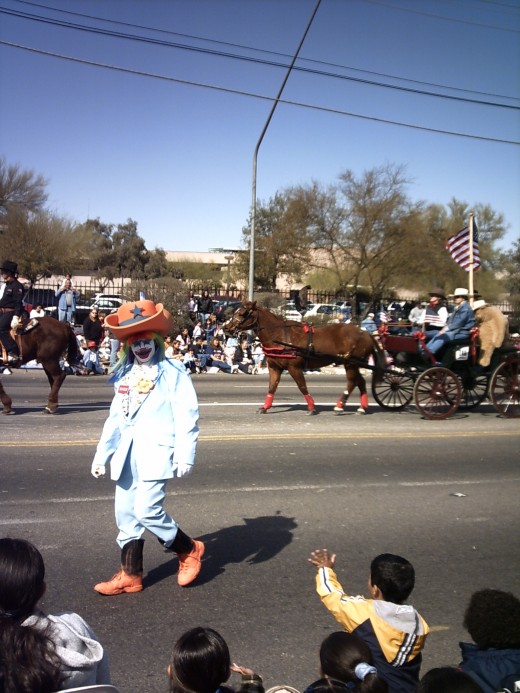
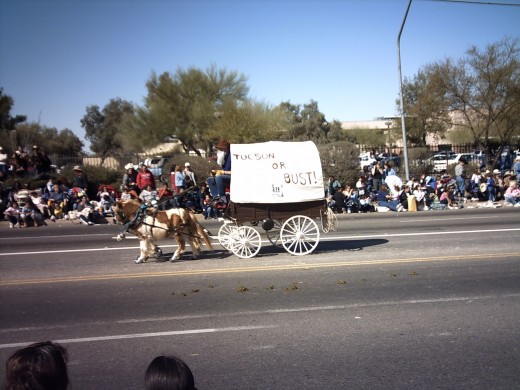
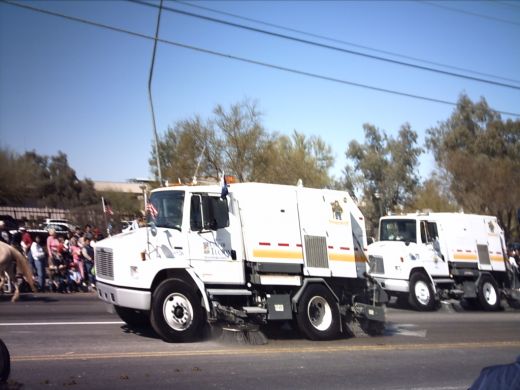
- Rodeo History
- Rodeo History - The Early Years
Covering the early years of rodeo history. Rodeo occupies a unique position in modern sports. Rodeo is a window into the past while at the same time offers a unique and fuly modern sport unlike any other. Read about the exciting development of rod - La Fiesta de los Vaqueros,TUCSON RODEO PARADE,Committee and Museum
La Fiesta de los Vaqueros,TUCSON RODEO PARADE Committee and Museum - La Fiesta de los Vaqueros,TUCSON RODEO PARADE,Tucson Arizona History
La Fiesta de los Vaqueros,TUCSON RODEO PARADE Committee and Museum - La Fiesta de los Vaqueros,TUCSON RODEO PARADE,The 4 Horsemen
La Fiesta de los Vaqueros,TUCSON RODEO PARADE Committee and Museum - Fiesta reflects finest of Old Pueblo - Tucson Citizen Morgue (1992-2009)
Fiesta reflects finest of Old Pueblo - Tucson Citizen Morgue (1992-2009)




